Recordkeeping Questions of the Week
Federal Employment Poster Requirements for On-Site and Remote Workers
Last Updatedin HR Compliance, Recordkeeping Question of the Week
When To Complete an I9 for a Rehired Employee?
Last Updatedin Recordkeeping Question of the Week
How Long Should We Keep Resumes and Applications?
Last Updatedin Recordkeeping Question of the Week
How Do I Handle Missing or Incorrect I-9 Forms?
Last Updatedin HR Compliance, Recordkeeping Question of the Week
Do I Need a New I-9 Form for a Name Change?
Last Updatedin HR Compliance, Recordkeeping Question of the Week
What are the Best HR Practices for the End of the Year?
Last Updatedin HR Compliance, HR Strategy, Recordkeeping Question of the Week
What to do if the IRS notifies you of Affordable Care Act (ACA) penalty fees
Last Updatedin Recordkeeping Question of the Week
How to Conduct an Internal I-9 Audit
Last Updatedin HR Compliance, Recordkeeping Question of the Week
Can I backdate FMLA paperwork?
Last Updatedin Benefits & Compensation, HR Compliance, Recordkeeping Question of the Week
What Do I Have to Know Before Filing My EEO-1 Report?
Last Updatedin Recordkeeping Question of the Week
Who Has to Submit OSHA Form 300A?
Last Updatedin Health, Safety & Security, HR Compliance, Recordkeeping Question of the Week
Electronic Recordkeeping Checklist
Last Updatedin Recordkeeping Question of the Week
Performance Review Copies
Last Updatedin HR Compliance, Recordkeeping Question of the Week
What to Include in a Written Warning
Last Updatedin Recordkeeping Question of the Week
Does A Hospital Overnight Stay Qualify for FMLA?
Last Updatedin Recordkeeping Question of the Week
How To Organize Employee Records And Remain Compliant
Last Updatedin Recordkeeping Question of the Week
Why Is It Important To Get An Employee’s Signature?
Last Updatedin HR Strategy, Recordkeeping Question of the Week
I-9 Forms for Seasonal Employees
Last Updatedin Recordkeeping Question of the Week
Candidate Experience: How Small Tweaks Can Make a Huge Impact
Last Updatedin Communications, Recordkeeping Question of the Week
Avoid Penalties: Maintain a Legal Hiring Process
Last Updatedin Recordkeeping Question of the Week
Hiring Foreign Nationals
Last Updatedin Recordkeeping Question of the Week
An Employee Died Suddenly But Had Not Updated Their Beneficiary
Last Updatedin Recordkeeping Question of the Week
Employee Files
Last Updatedin Recordkeeping Question of the Week
Key Areas of Recordkeeping to Keep Up to Date in the New Year
Last Updatedin Recordkeeping Question of the Week
Disposing of Old Records
Last Updatedin Recordkeeping Question of the Week
Requiring Employee Contact Information
Last Updatedin Employee Relations, Recordkeeping Question of the Week
Managers Maintaining Personnel Files
Last Updatedin Recordkeeping Question of the Week
Contact Us
Clark Schaefer Strategic HR
10856 Reed Hartman Hwy
Suite 225
Cincinnati, OH 45242

Clark Schaefer Strategic HR is recognized by SHRM to offer Professional Development Credits (PDCs) for SHRM-CP® or SHRM-SCP® recertification activities.
The information provided on this website does not, and is not intended to, constitute legal advice; instead, all information, content, and materials available on this site are for general informational purposes only. Readers of this website should contact their attorney to obtain advice about their particular situation and relevant jurisdiction. This website contains links to other third-party websites. These links are only for the convenience of the reader, user or browser; Strategic HR does not recommend or endorse the contents of the third-party sites.



